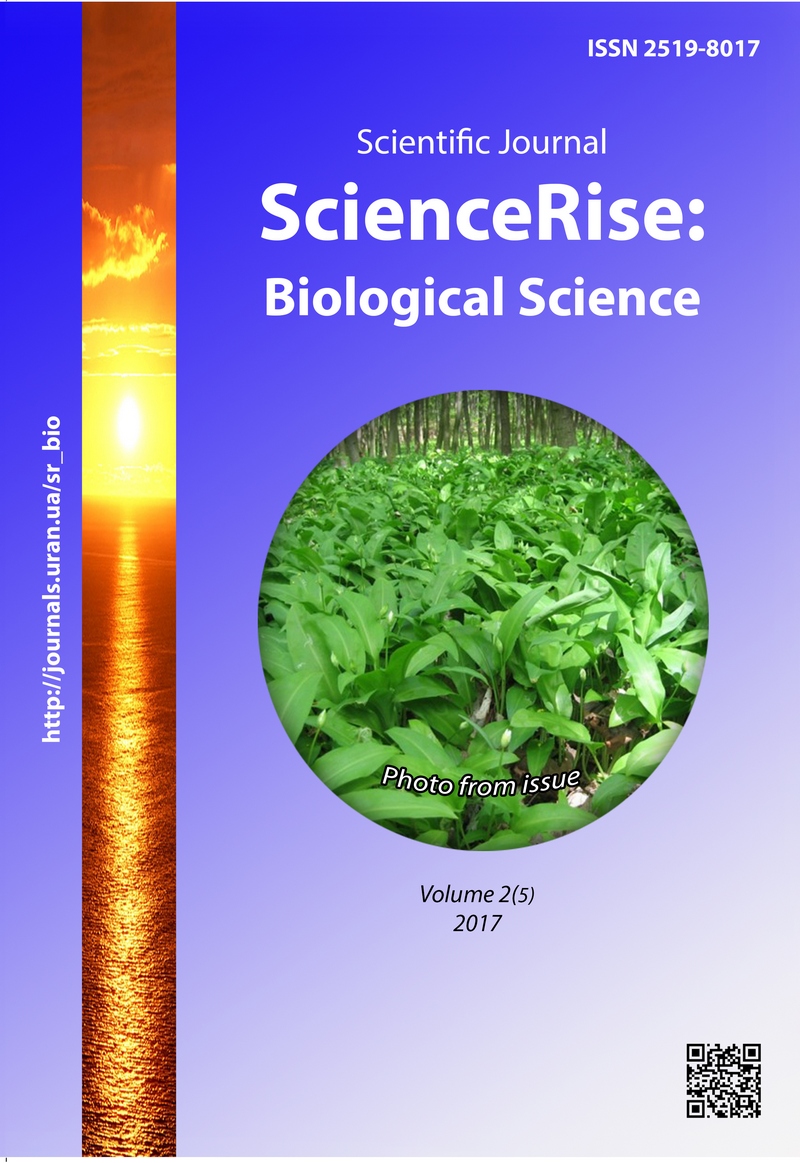Флористичне різноманіття та систематична структура флори національного природного парку «Білобережжя Святослава»
DOI:
https://doi.org/10.15587/2519-8025.2017.99760Ключові слова:
флористичне багатство, β-різноманіття, систематична структура, флористичні пропорції, аборигенна та адвентивна фракцііАнотація
Список флори нараховує 595 видів судинних рослин із 318 родів 83 родин 4 відділів. Аборигенна фракція становить 479 видів, 227 родів, 50 родин, адвентивна – 116 видів, 91 родів і 33 родин. Значну роль у складі флори відіграють покритонасінні – 98,8 %. Флористичні пропорції: (вид/рід) – 1 (вид/род.) – 3,8 (рід/род.) – 7,2. Флора характеризується значним видовим і родови різноманітніттям і однаково тяжіє як до флор Давнього Середземномор'я, так і до бореальних флора, при цьому, одночасно спостерігається зміщення систематичної структури внаслідок антропогенного впливу
Посилання
- Umanets, O. Iu. (1997). Ekoloho-tsenotychnakharakterytyka flory pishchanykh masyviv Livoberezhzhia Nyzhnoho Dnipra ta yii henezys. Kyiv, 19.
- Onyshchenko, V. A., Andriienko, T. L. (Eds.) (2012). Fitoriznomanittia zapovidnykiv i natsionalnykh pryrodnykh parkiv Ukrainy. Natsionalni pryrodni parky. P. 2. Kyiv: Fitosotsiotsentr, 580.
- Barbarych, A. I. (Ed.) (1977). Heobotanichne raionuvannia Ukrainskoi RSR. Kyiv: Naukova dumka, 304.
- Tymoshenko, P. A. (2000). Florotsenotychni kompleksy Nyzhnodniprovskykh aren v umovakh antropohennoho vplyvu. Kyiv, 19.
- Karnatovska, M. Iu. (2006). Flora ta roslynnist Nyzhnodniprovskykh aren. Kyiv, 19.
- Klokov, M. V. (1981). Psamofylnуe florystycheskye kompleksy na terrytoryy USSR. Novosty systematyky vуsshykh y nyzshykh rastenyi za 1979 h. Kyiv: Naukova dumka, 90–150.
- Umanets, O. Iu. (1999). Ystoryia yzuchenyia pryrodnoi rastytelnosty Nyzovyi Levoberezhnoho Dnepra. Ukrayinskyj fitocen. Zbirnyk. Seriya: A. Fitosociologiya, 1-2 (12-13), 210–218.
- Mosyakin, S., Fedoronchuk, M. (1999). Vascular plants of Ukraine: a nomenclatural checklist. Kyiv: M. G. Kholodny Institute of Botany, 345.
- Dobrochaeva, D. N., Kotov, M. Y., Prokudyn, Yu. N. et. al. (1987). Opredelytel vуsshykh rastenyi Ukraynу. Kyiv: Naukova dumka, 548.
- Bondarenko, O. (2015). Flora-lower reaches of the Dniester watershed Tiligul (Odessa region, Ukraine). Chornomorski botanical journal, 11 (3), 278–296.
- Novosad, V. V. (1992). Flora Kerchensko-Tamanskoho rehyona. Kyiv: Naukova dumka, 280.
- Voronova, S. M. (2008). Florystychne bahatstvo ta systematychna struktura flory Yelanetsko-Inhulskoho rehionu. Ukrainian Botanical Journal, 43, 544–551.
- Melnychuk, S. S. (2006). Flora Matviivskoho pishchanoho masyvu. Studentskyi naukovyi visnyk Mykolaivskoho derzhavnoho universytetu imeni V.O. Sukhomlynskoho, 1, 53–54.
- Kolomiiets, H. V. (2006). Adventyvni roslyny u merezhi pryrodookhoronnykh terytorii Mykolaivskoi oblasti. Synantropizatsiia roslynnoho pokryvu Ukrainy. Pereiaslav-Khmelnytskyi, 98–100.
- Protopopova, V. V. (1991). Synantropnaia flora Ukraynу y puty ee razvytyia. Kyiv: Naukova dumka, 204.
##submission.downloads##
Опубліковано
Як цитувати
Номер
Розділ
Ліцензія
Авторське право (c) 2017 Ganna Trochymenko, Svetlana Melnychuk

Ця робота ліцензується відповідно до Creative Commons Attribution 4.0 International License.
Наше видання використовує положення про авторські права Creative Commons CC BY для журналів відкритого доступу.
Автори, які публікуються у цьому журналі, погоджуються з наступними умовами:
1. Автори залишають за собою право на авторство своєї роботи та передають журналу право першої публікації цієї роботи на умовах ліцензії Creative Commons CC BY, котра дозволяє іншим особам вільно розповсюджувати опубліковану роботу з обов'язковим посиланням на авторів оригінальної роботи та першу публікацію роботи у цьому журналі.
2. Автори мають право укладати самостійні додаткові угоди щодо неексклюзивного розповсюдження роботи у тому вигляді, в якому вона була опублікована цим журналом (наприклад, розміщувати роботу в електронному сховищі установи або публікувати у складі монографії), за умови збереження посилання на першу публікацію роботи у цьому журналі.










